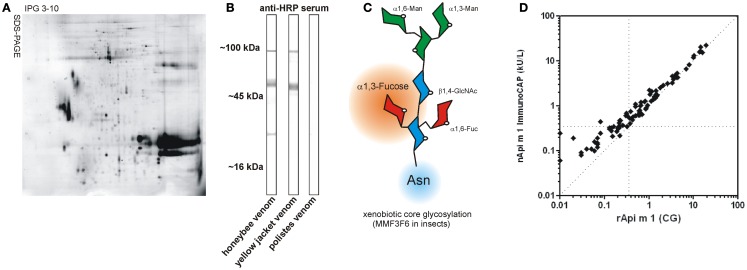In Western Europe, Hymenoptera venom allergy (HVA) primarily pertains to venoms of the honeybee and the widespread yellow jacket. In distinction to different allergen sources, just a few main parts of Hymenoptera venoms had been characterised till lately.
Improved expression methods and proteomic detection methods have allowed the identification and characterization of a variety of further allergens.
The sector of HVA analysis has moved quickly from specializing in venom extract and single main allergens to a molecular understanding of your complete “venome” as a system of distinctive and attribute parts.
An growing variety of such parts has been recognized, characterised concerning perform, and assessed for allergenic potential.
Furthermore, superior expression methods for recombinant manufacturing of venom allergens permit selective modification of molecules and supply perception into several types of immunoglobulin E reactivities and sensitization patterns.
The obtained data contributes to an elevated diagnostic precision in HVA and will serve for monitoring, re-evaluation, and enchancment of present therapeutic methods.

Basophil allergen threshold sensitivity: a helpful strategy to anti-IgE therapy efficacy analysis.
BACKGROUNDMonitoring of the allergen sensitivity of a affected person is most vital for optimum affected person care and a fundamental prerequisite for immunomodulating therapy.
The target of this examine was to analyze how basophil allergen sensitivity might be utilized within the monitoring of anti-immunoglobulin E (IgE) therapy.METHODSBasophils from timothy grass pollen allergic sufferers have been, by move cytometry, analysed for allergen threshold sensitivity (CD-sens) by measuring CD63 up-regulation on CD203c-identified basophils.
The outcomes have been in contrast with maximal share CD63 up-regulation at one allergen dose (CD-max), pores and skin prick take a look at end-point allergen titration, (SPT-sens), nasal provocation titration assessments (nasal provocation titre) and serum IgE and IgE antibody concentrations.
RESULTSThere was a big correlation (r = 0.50, P = 0.01) between CD-sens and SPT-sens, CD-sens and the IgE antibody focus in share of ‘whole IgE’ (relative IgE antibody focus) (r = 0.72, P < 0.001) in addition to between CD-sens and nasal provocation titre (r = 0.54, P < 0.05) however, in distinction, CD-max didn’t correlate with any of the sensitization parameters, i.e. SPT-sens, nasal provocation titre, absolute and relative IgE antibody focus or CD-sens.
CD-sens might be used to observe omalizumab therapy efficacy whereas, based mostly on CD-max, 4 of seven symptom-free sufferers on omalizumab would have been labeled as having ongoing allergy.CONCLUSIONSCD-sens appears to be very helpful for the willpower of a affected person’s allergen sensitivity and must be evaluated for the measurement and monitoring of anti-IgE therapy efficacy.
CD-max, the traditional strategy to basophil allergen problem, which mirrors cell reactivity, provides incorrect data.
